Greek Revival Period
Early America was fascinated by the aesthetics of ancient and classical Greece for two main reasons: the young country was fueled by a growing understanding of democratic ideals, and the 1820s saw Greece battling its popular revolution for independence from the Ottoman Empire, which captured America’s sympathies. Some of the earliest American examples of the Greek Revival Style occurred in Philadelphia, Washington, D.C., and other cities where builders constructed schools, post offices and government buildings that looked like ancient temples. In Delaware, the Greek Revival style was popularly applied to many houses and decorative arts, while nationally, the growing American market for fine art also embraced ancient Greek aesthetics, as demonstrated in figural sculpture and landscape painting.
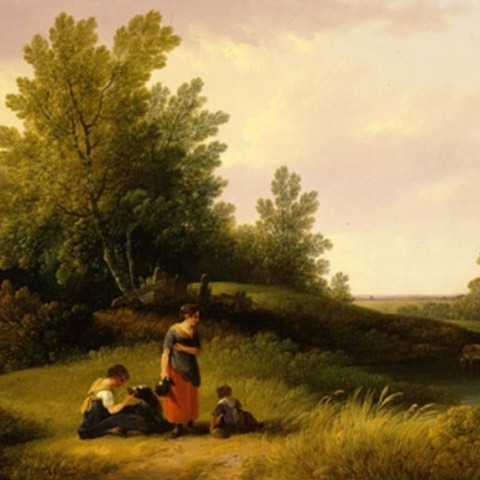
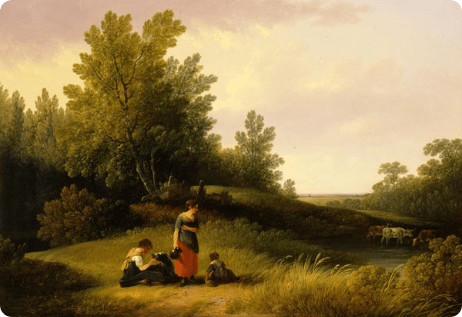
An English immigrant, Joshua Shaw brought the British interest in idealized landscapes to Philadelphia. Afternoon Rest features a scene of gentle nature, complete with a pastoral group of children playing with a shepherding dog. Even though this work was probably painted in the Mid-Atlantic region where Shaw lived and worked, it was not painted to represent any specific local scene. Instead, Shaw strove to represent a natural paradise reminiscent of ancient wall paintings.
AFTERNOON REST
JOSHUA L. SHAW (1777–1860)
CA. 1825
OIL ON CANVAS
GIFT OF SEWELL C. BIGGS; 1996.18
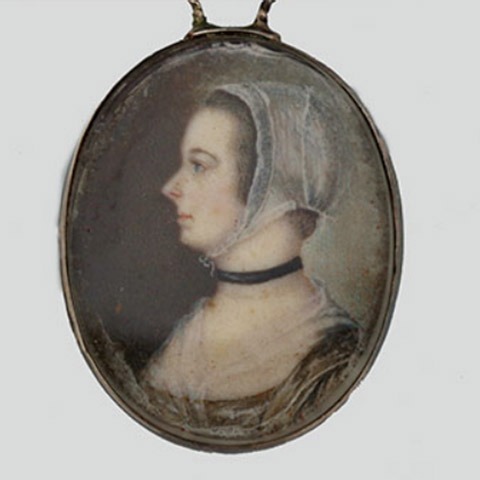

This pendant of an unknown woman was set into a silver mount that is marked by Wilmington silversmith General James Wolf. A similar pendant marked by Wolf is known with a portrait of a young man also dressed in the clothing of first decades of the 19th century.
PENDANT
PORTRAIT BY UNKNOWN ARTIST
MOUNT BY GENERAL JAMES WOLF (1779-1858)
PROBABLY WILMINGTON, FIRST HALF OF THE 19TH CENTURY
SILVER
PARTIAL GIFT FROM COL. KENNETH P. AND REGINA I. BROWN; 2005.416
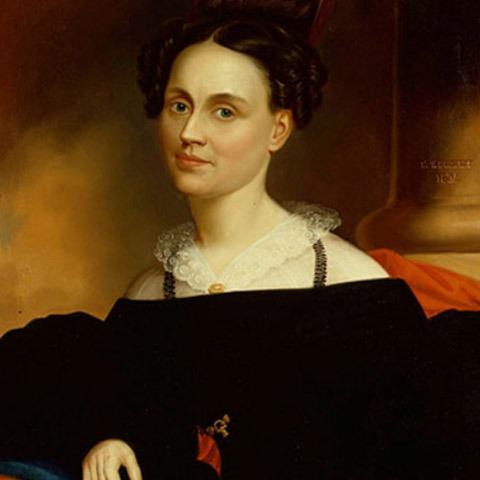
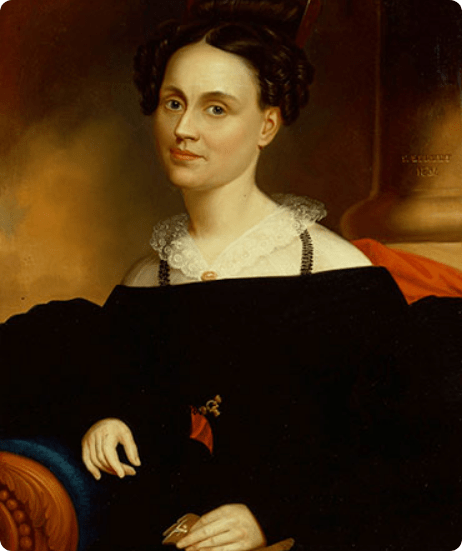
Robert Street began his career in Philadelphia as a painter of historic events, but he began focusing on portraiture in the 1820s. Here he emphasized the sitter’s wealth and fashionable status by adding expensive jewelry and allusions to classical architecture, such as the column in the background.
PORTRAIT OF A WOMAN
ROBERT STREET (1796–1865)
1834
OIL ON CANVAS
GIFT OF SEWELL C. BIGGS; 1992.45
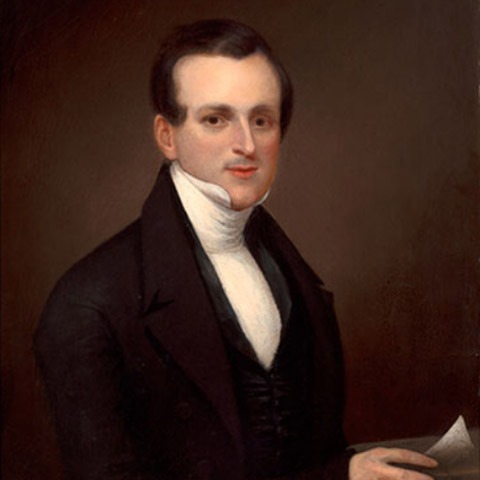

Thomas Bud Bradford inherited the estate of his grandfather, Dover merchant Vincent Loockerman, and would help modernize Dover’s downtown area by transforming nearby farmlands into new housing developments. Perhaps to commemorate his newfound success, Bradford had his portrait painted by popular Philadelphia limner and inventor, Bass Otis.
PORTRAIT OF THOMAS BUD BRADFORD
BASS OTIS (1784-1861)
PROBABLY 1840S
OIL ON CANVAS
ON LONG-TERM LOAN COURTESY OF THE BRADFORD-LOOCKERMAN FAMILY
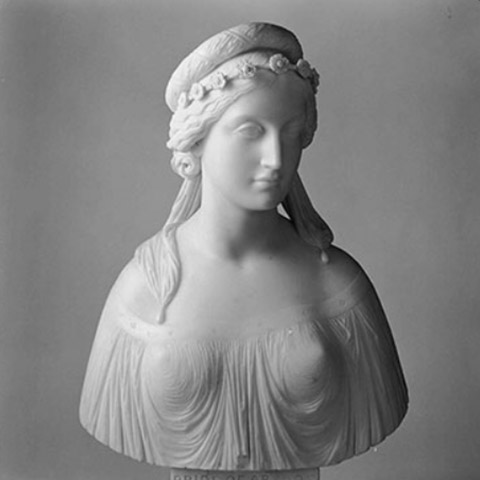

Thomas Crawford was among the first wave of American sculptors to study classical sculptural traditions in Rome in 1835. The subject of this artwork comes from a poem of the same title by Lord Byron.
THE BRIDE OF ABYDOS
THOMAS CRAWFORD (1813/14–1857)
MODELED 1841; CARVED 1842
MARBLE
SEWELL C. BIGGS BEQUEST; 2004.496

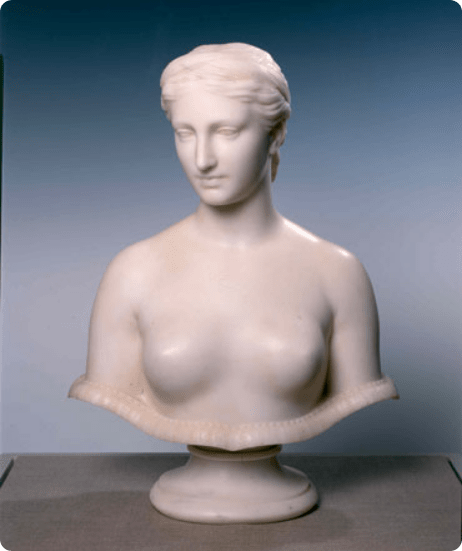
Painting styles and approaches changed dramatically during the 1700s and 1800s in America and Europe. However, sculpture largely remained conservative, depicting classical subjects or idealized portraits, often in classical costume. According to Greek mythology, Persephone was a daughter of Zeus and Demeter, kidnapped by Hades to become queen of the underworld. When she is in the underworld, her mother, the goddess of the harvest, mourns and causes the cold of winter. When Persephone is allowed to return to the surface and rejoin her mother for part of the year, Demeter’s happiness creates warm spring and summer.
PERSEPHONE
HIRAM POWERS (1805–1873)
CA. 1849
MARBLE
SEWELL C. BIGGS BEQUEST; 2004.495
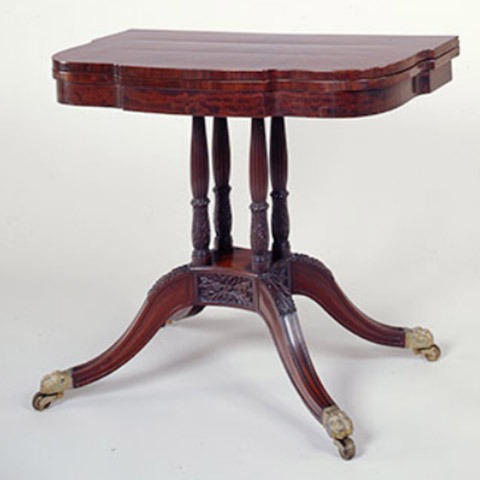
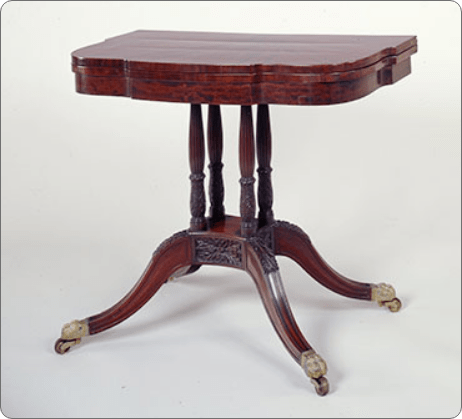
Different from many Philadelphia examples of this period, this pair of tables (one shown) features a very unique design: the tabletop rests on four classical columns, the legs are dovetailed into the base, and the acanthus decoration is deeply carved into decorative panels. The tables are similar to a large suite of furniture that Ephraim Haines and Henry Connelly made in 1817 for Philadelphia merchant and philanthropist Stephen Girard (1750-1831).
CARD TABLE
SCHOOL OF EPHRAIM HAINES AND HENRY CONNELLY
PHILADELPHIA, 1810–20
MAHOGANY, MAHOGANY VENEERS, WHITE PINE,
TULIP POPLAR
GIFT OF SEWELL C. BIGGS; 1992.114.1–.2

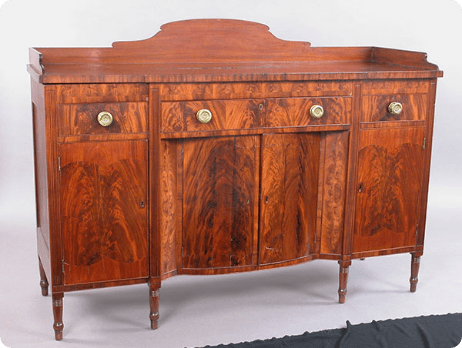
This is the only known piece of furniture bearing the signature of Dell Noblet, one of a number of Noblet furniture makers working in Wilmington, Delaware, in the 1800s (some spelled their names “Noblett” and “Noblit”.) This maker’s son, Hamilton Noblet, worked around 1836 to 1853 in the Gothic Revival style that was popular during that time.
SIDEBOARD
DELL NOBLET (1777–?)
WILMINGTON, DELAWARE, CA. 1825
MAHOGANY, MAHOGANY VENEER, WHITE PINE,
TULIP POPLAR
MUSEUM PURCHASE; 2006.14
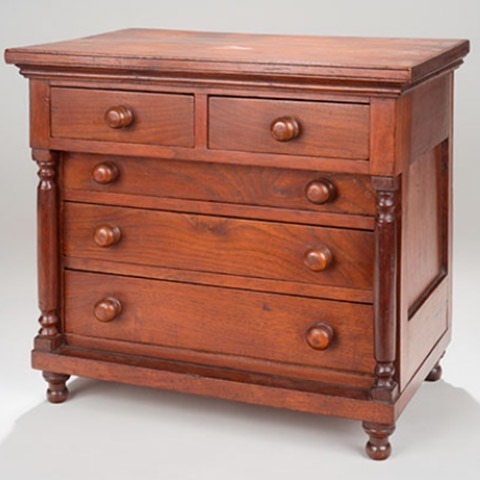

This miniature chest comes with its own piece of history, courtesy of a handwritten letter that was found beneath the lid. The letter, in poetic 19th century prose, tells how William Baker, a cabinetmaker from Frederica, made this object as a gift for his friend Robert Y. Townsend. To date, little more is known about this Delaware furniture maker.
MINIATURE CHEST OF DRAWERS
WILLIAM BAKER (DATES UNKNOWN)
FREDERICA, DELAWARE, 1841
WALNUT, TULIP POPLAR, YELLOW PINE
MUSEUM PURCHASE; 2011.10

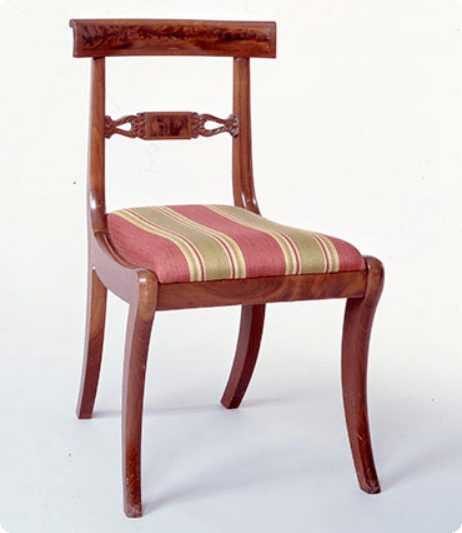
Furniture excavated from archeological sites in Greece influenced the form of this “klysmos” chair. The painted surfaces of ancient Grecian vases also show this chair form. Though these examples are probably from Philadelphia, furniture makers in cities across the United States were making this popular chair style.
SIDE CHAIR
MAKER UNKNOWN
PHILADELPHIA, 1820–35
MAHOGANY, MAHOGANY VENEER, MAPLE, TULIP POPLAR
GIFT OF SEWELL C. BIGGS; 1996.42.1

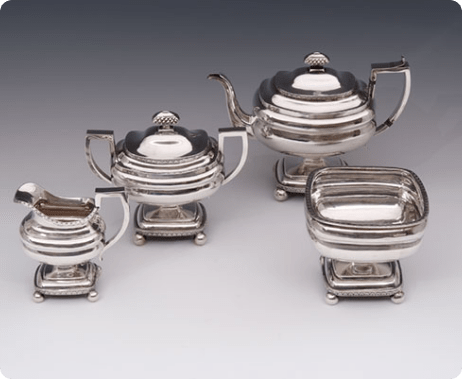
General Wolf’s tea set embodies the simplified geometry and restrained decoration of the Greek Revival period. The set also reflects the first stages of the Industrial Revolution in America and was made less expensively than previous examples. It was assembled from mass-produced components such as sheet silver, molded handles and decorative borders.
TEA SET
GENERAL JAMES WOLF (1779–1858)
WILMINGTON, DELAWARE, CA. 1830
SILVER PARTIAL GIFT FROM COL. KENNETH P. AND REGINA I. BROWN; 2005.420.1–.4
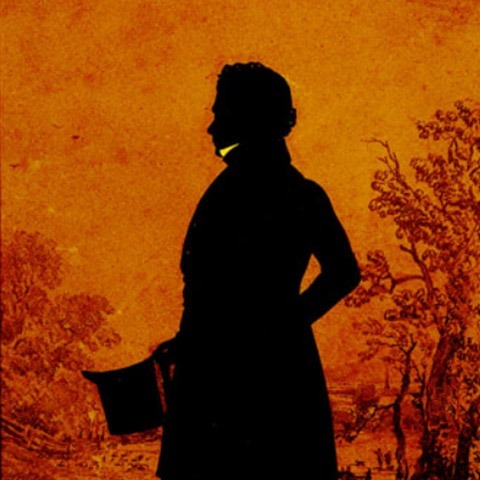

The silhouette portrait was a wildly popular medium in the early 18th to 19th centuries. In this work, artist Auguste Edouart carefully cut the silhouette and pasted it into a customized background scene. Edouart was known for his skills with scissors and small details, such as the small white piece of paper in this work, meant to depict the gentleman’s collar.

